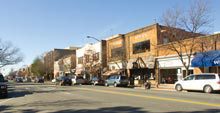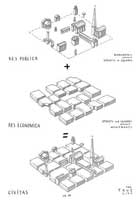 In recent months, a repeated refrain – How should Beaufort look? – has echoed through our town, prompted in part by a variety of planning initiatives underway in the community.
In recent months, a repeated refrain – How should Beaufort look? – has echoed through our town, prompted in part by a variety of planning initiatives underway in the community.
With citizens offering their opinions during countless public design workshops, and respected groups like the Historic Beaufort Foundation and the Beaufort County Open Land Trust weighing in, the discussion has been dynamic and often candid, with questions leading to more questions, as the public sifts through information, both good and bad, in response to this refrain.
I take the refrain especially to heart because it aims at my own professional practice. I hold a professional degree in Classical Architecture, I am a City Planner certified by the American Planning Association, I am a US Green Building Council accredited professional, I am accredited with the Congress for New Urbanism, and I have been a member of the National Trust for Historic Preservation for the entirety of my career. Helping determine how places look is what I have the pleasure of doing every day I go to work, and it’s an honor that I take very seriously.
A few generations ago, places looked the way they did because neighbors built the buildings of a community together, in the effective methods handed down without formal regulations. There was no such thing as “traditional zoning,”some sort of rulebook that determined how to construct the buildings that preservationists now refer to as “traditional” in form and style. Instead, communities locally-sourced materials and know-how and responsibility for the built environment. Towns like Beaufort were built slowly, at very high personal investment, with very little to do with today’s real estate development industry.
In short, zoning codes did not exist back then; they didn’t need to.
Around the turn of the 20th century, a few health and safety ordinances were created, restricting establishments like noxious (and immigrant-run) laundries outside San Francisco or brick-making factories in residential areas of Los Angeles. This trend spurred some localized regulation of land use and eventually brought about the Fifth Amendment to the U.S. Constitution, often referred to as the “Takings Amendment,”which aimed to prohibit the government from removing value of private land without just compensation.
The widespread lack of zoning, or governmental determination of how a place looks, shifted with the advent of the skyscraper in New York City when, in 1916, the city passed the first comprehensive zoning code. The ordinance issued maps documenting allowable building type by city “zone”and required certain provisions for allowed buildings: how to face the street and how to allow light and fresh air to meet the street. The goal of the ordinance was to provide predictability to land owners, support public health and safety, and determine in a general way what the city should look like.
However, the development of zoning codes changed drastically around 1926, when the town of Euclid, OH passed a zoning code that required buildings of differing use to be physically isolated from each other, resulting in the Supreme Court case Village of Euclid, Ohio v. Ambler Realty Co. After the court found that Euclid had the police power to determine where uses were allowed, communities across the country quickly followed suit with their own single-use zoning ordinances, commonly referred to as “conventional”or “Euclidean”zoning. And while the intent behind these ordinances might have been reasonable —separating incompatible building uses for public well-being —over time, the built results often became detrimental, especially to places with ample historic character. In fact, without existing building exemption, Euclidean zoning would deem the majority of downtown Beaufort’s historic building stock as illegal, since segregation of uses and detachment of individual buildings from each other is quite the opposite of the character we cherish across our protected Historic District.
Form-based zoning codes, by comparison, are a far more recent development in urban planning, growing from the return to traditional urban forms and historic character preservation. Prioritizing a building’s physical form and appropriate relationship to other buildings is the organizing principle of a form-based code, with the goal being predictable and compatible character for new buildings, especially those built within existing urban fabric. In fact, the National Trust for Historic Preservation advocates adoption of preservation-friendly form-based codes, especially through its National Main Street Center, of which our own beloved Main Street Beaufort USA is an accredited program.
Both Beaufort County and the City of Beaufort (as well as Port Royal) have recently taken on the challenge of adopting new form-based zoning ordinances to replace our older Euclidean use-based zoning. These efforts should be celebrated for the commitment they show to protecting our community character and undoing outdated regulations that favor berms, parking lots, buffers, and isolation over our treasured traditional sense of place.
In a city with three centuries of built history to refer to, we enjoy bountiful examples of efficient, economical, and beautiful built places. As architectural styles come and go, and as community growth ebbs and flows, we continue to seek predictable outcomes for Beaufort’s built form, buildings that will inspire and contribute to our built legacy rather than stand apart, quickly outdated and obsolete. We hope that our town will continue to look the way we collectively want it to, and zoning codes can hurt —or help —those hopes.
Mallory B.E. Baches is an urban designer and civic specialist. She is an active member of the Congress for the New Urbanism – Carolinas Chapter.








